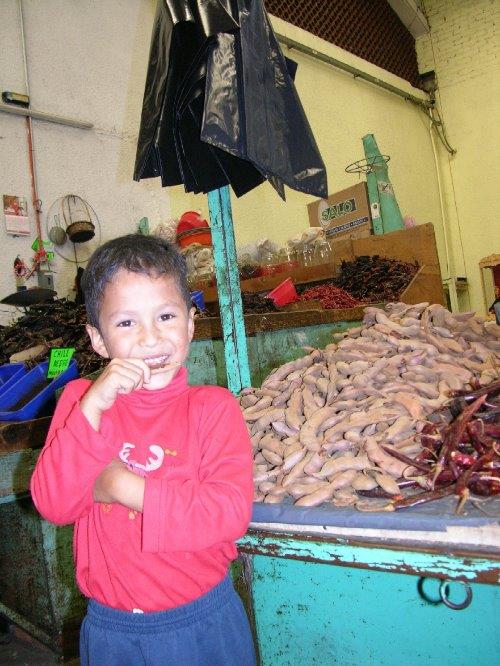Tamarind
Each person born in the tropics has a story to tell about the tamarind. As tamarind season approaches on the Eastern plains of Colombia, women start the harvest to make “tamarindada” to offer the thirsty farmers following an intense day of work. In Trinidad and Jamaica, tamarind is a popular refreshing snack. Asians, particularly in Thailand and India, have a long tradition of eating and cooking with tamarind. So many people it seems use this fruit to create delicious salsas, chutneys, and sauces.

Growing Tamarind in South Florida
The tamarind (Tamarindus indica) produces edible fruit, being smooth and brittle to the touch; inside the pasty flesh clings tightly to the hardened dark-brown seeds. The tamarind tree grows easily in South Florida and requires little care. The fruiting season in Florida is February to May but there is often a tree here or there with fruit out of the normal season. Tamarind paste is also available year-round in Asian specialty stores. Tamarind is adapted to a wide range of ecological conditions, reflecting its wide geographical distribution in the semi-arid tropics.

Tamarind should be grown in the full sun. The twigs and branches of Tamarind are resistant to wind, making it especially useful as a shade or street tree for breezy locations and of course locations prone to tropical cyclones. Tamarind does not have special soil requirements and thrives in the poor soils of South Florida. However the tree is not tolerant of water-logged conditions, so if your home garden is reminiscent of the Everglades all efforts should be taken to raise the planting area. The tamarind is ease to grow.
Fertilization: Application with an 8-3-9 or other fruit tree formulation can be done three times a year (March, July and September).
Pruning: Young trees are pruned to allow three to five well spaced branches to develop into the main scaffold structure of the tree. Contrary to popular belief, the tamarind is not salt-tolerance and will be hurt by both salt spray and salt on its roots.
What to Grow: Trees grow easily from seed and usually take four to five years before they begin flowering and fruit production. However, seedlings will be of unknown quality. If a specific variety is desired a grafted or air-layered tree should be purchased from a reputable nursery. Local nurseries will sell sweet and sour tamarind varieties and they are not usually more specific. The tart varieties are generally more suited for cooking and for drinks. The sweet varieties come from Thailand and are perfect eaten out-of-hand. They have very low acid and are not suitable for the making of drinks.
In most years tamarind fruit ripen before the rains begin in the spring. If we have an early rainy season much of the crop will be lost to decay. When there are several days of rain on the ripening fruit many fungi will attack the fruit and there will also be a heavy loss to weevils that bore into the hardened brown seeds, rendering the pulp of the fruit inedible.
Harvesting: Tamarinds can be harvested by shaking the branches and collecting the pods on a mat or sheet beneath the tree. This will only work if the fruit are fully ripened on the tree and the rains have not started. If the later is so then the fruit must be hand-picked to sort ripe and unripe fruit to remove decayed fruit. The fruit of sweet types are harvested at two stages, half-ripe and ripe. At the half ripe stage the pulp is yellowish green and has the consistency and taste of a ‘Granny Smith’ apple. Many here in Florida are unaccustomed to eating a tamarind in this manner, but it is a true delight and should be tried.
At the fully ripe stage, the pulp shrinks, due to loss of moisture, and changes to reddish brown and becomes sticky, forming a natural candy perfect for children. Harvested pods are dried in the sun for 5-7 days to bring all fruits including the half-mature fruit to the fully ripe stage, and storage for 1 year at room temperature and dry place. Both tart and sweet varieties can be stored for a year or more if they are kept cool and dry. After one year the color can changes to dark brown or black and the sweetness is intensified. The tamarind is truly a fruit that can be saved for a rainy day, as long as it is not still hanging on the tree.
This article was written by Noris Ledesma and originally published in the Miami Herald. Noris Ledesma is Curator of Tropical Fruit at Fairchild Tropical Botanic Garden. Minor changes from the print version of this article were introduced to improve readability in a digital format.
